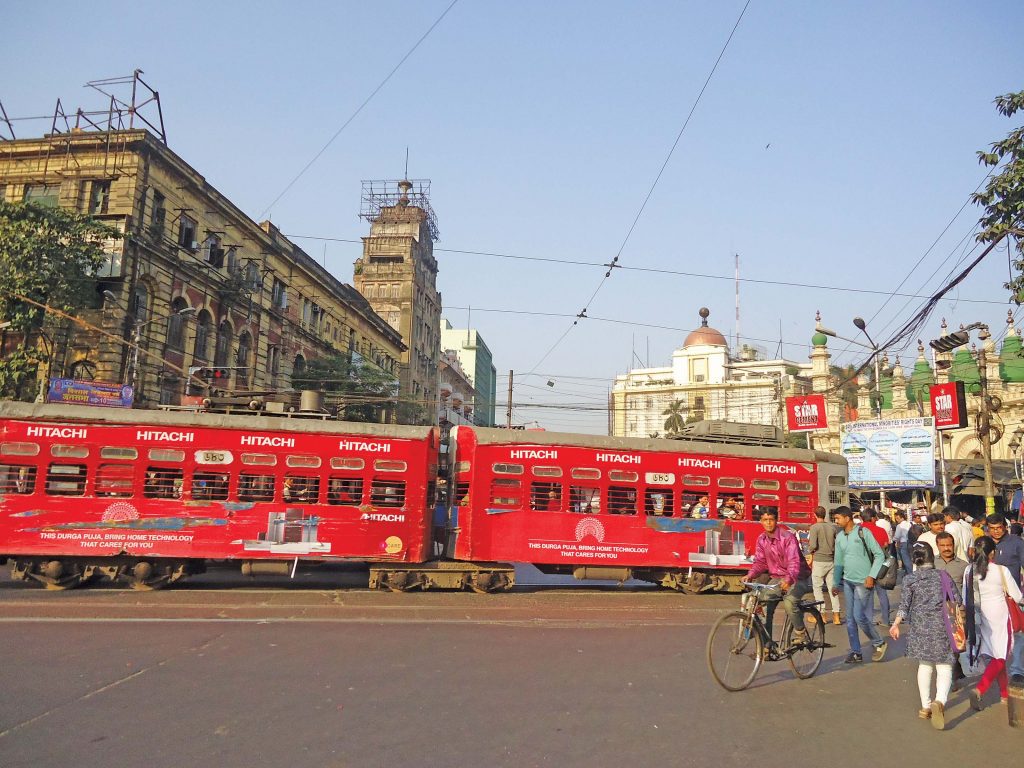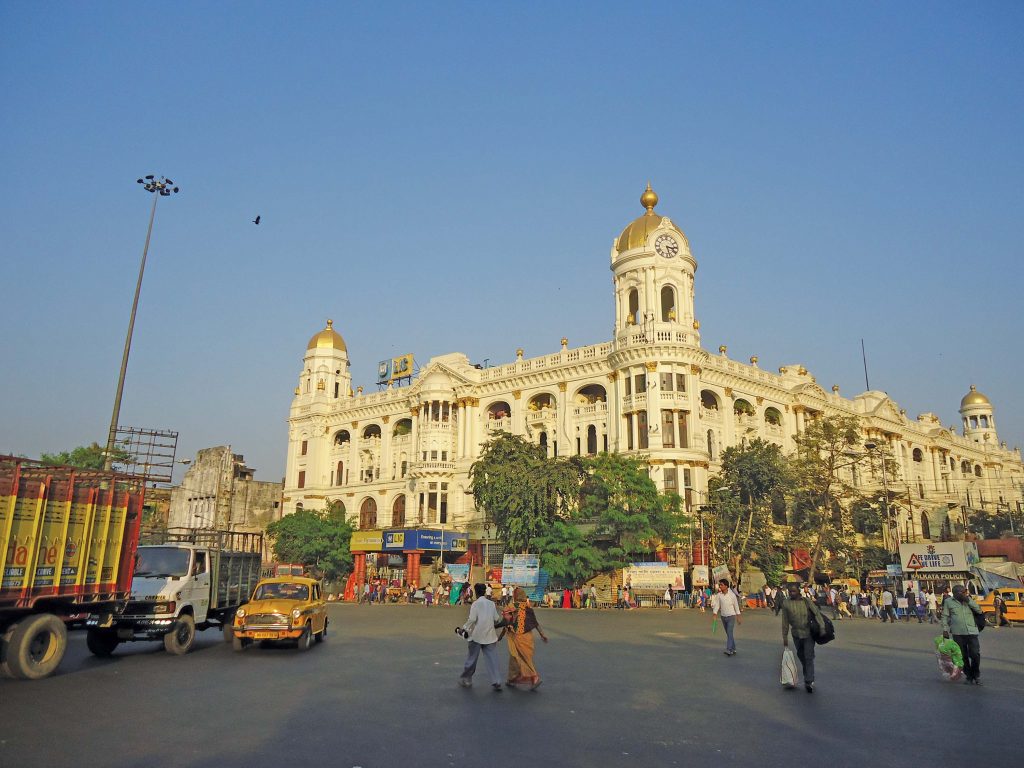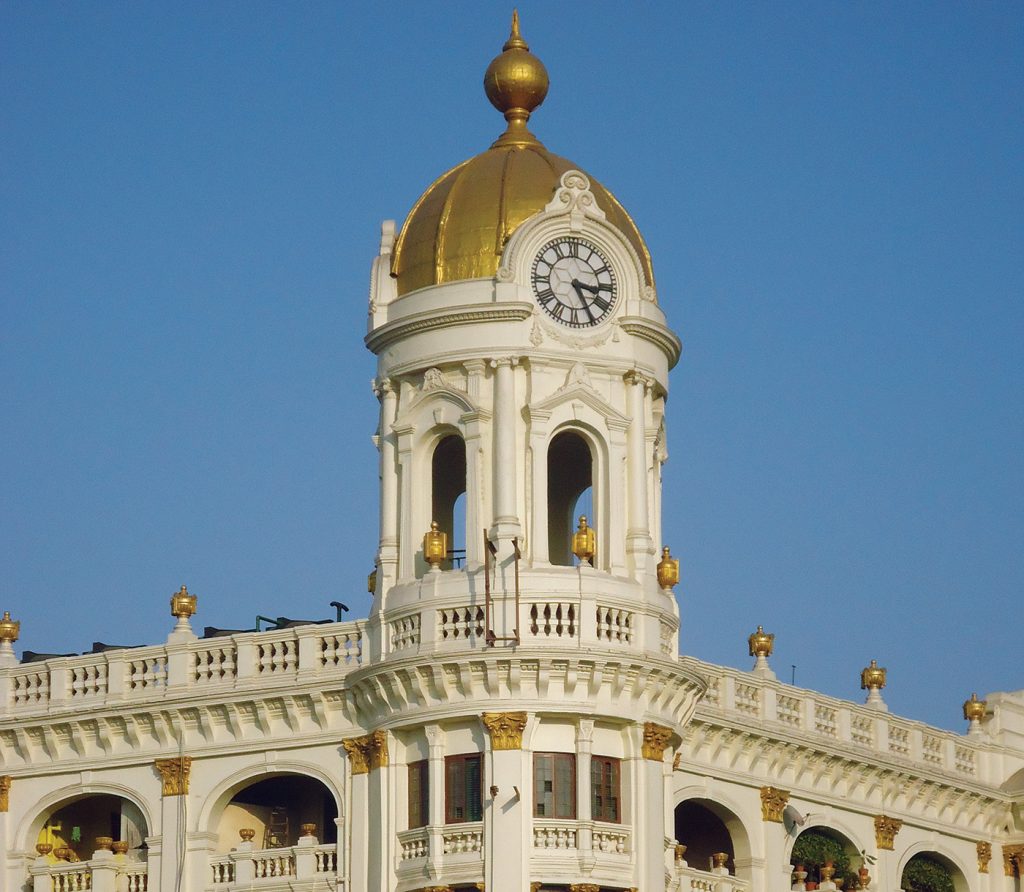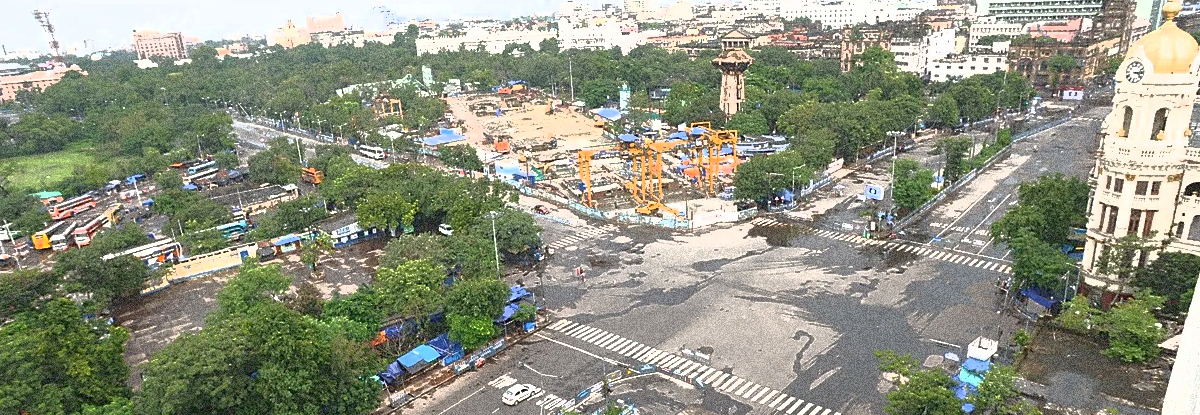Esplanade
THE HEART OF KOLKATA

Eden Gardens, along with the Strand and the Esplanade, formed the main recreational area for the English during the Raj. In 1902, the first electric tram car ran from Esplanade to Kidderpore. In 1984, the first underground railway in India, started from Tollygunge to the Esplanade. Today, this locality is one of the busiest parts of the city. The Esplanade was originally part of a jungle skirting the river Hooghly. Later, it got absorbed in the Maidan during the time Kolkata was the capital of India under the British.
During the days of Warren Hastings, it formed a favourite promenade for ʻelegant walking parties.ʼ And often the Sahibs would ride their horses across this green stretch, along with their memsahibs.

The first illustrations of the area at the end of eighteenth century were done by Daniell and William Baillie. The old Government House and the Council House were conspicuous objects in each drawing. The strengthening of British power, subsequent to the victory in the Battle of Plassey, was followed by the construction of thenew Fort William in 1758. The European inhabitants gradually forsook the narrow limits of the old palisades and moved to live around the Maidan, with the Esplanade as the major centre of attraction. The first recorded soccer match in Kolkata was played on the Esplanade in the second week of April 1858 between the Calcutta Club of Civilians and the ʻGentlemen of Barrakpur.ʼ

There had been matches earlier but those were not documented. The Shaheed Minar in the Esplanade, formerly known as the Ochterlony Monument, was erected in 1828 in memory of Major-General Sir David Ochterlony, commander of the British East India Company, to commemorate both his successful defense of Delhi against the Marathas in 1804 and the victory of the East India Companyʼs armed forces over the Gurkhas in the Anglo-Nepalese War.
In August 1969, it was rededicated to the memory of the martyrs of the Indian freedom movement and hence renamed the Shahid Minar. Entitled as the ʻCloud kissing Monumentʼ by Mark Twain, this tower is 157 ft high. It has a Egyptian style foundation and the structure is a combination of styles with a classical fluted column, a Syrian upper portion and a Turkish dome. It has two balconies at the top. The top floor of the minar is accessible by a serpentine staircase. The monument was erected by Burn & Company.

